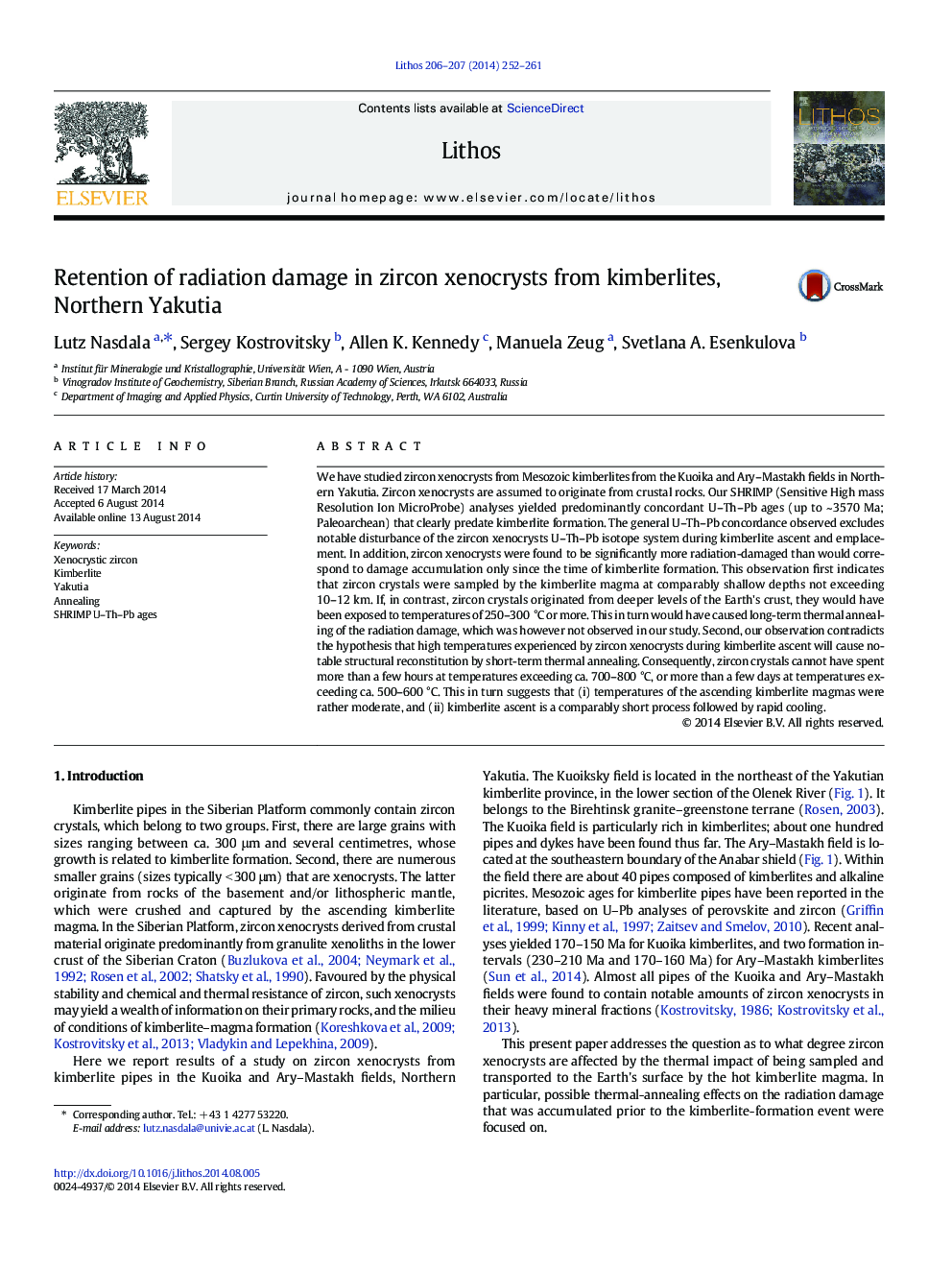| کد مقاله | کد نشریه | سال انتشار | مقاله انگلیسی | نسخه تمام متن |
|---|---|---|---|---|
| 4715950 | 1638672 | 2014 | 10 صفحه PDF | دانلود رایگان |

• We investigate zircon xenocrysts from kimberlites in Northern Yakutia.
• Zircons are U–Pb mainly concordant and considerably radiation-damaged.
• Xenocrysts originate from the upper crustal rocks (< 12 km depth).
• Annealing of radiation damage in the kimberlite magma was insignificant.
• During kimberlite ascent, zircons must have remained well below 800 °C.
We have studied zircon xenocrysts from Mesozoic kimberlites from the Kuoika and Ary–Mastakh fields in Northern Yakutia. Zircon xenocrysts are assumed to originate from crustal rocks. Our SHRIMP (Sensitive High mass Resolution Ion MicroProbe) analyses yielded predominantly concordant U–Th–Pb ages (up to ~ 3570 Ma; Paleoarchean) that clearly predate kimberlite formation. The general U–Th–Pb concordance observed excludes notable disturbance of the zircon xenocrysts U–Th–Pb isotope system during kimberlite ascent and emplacement. In addition, zircon xenocrysts were found to be significantly more radiation-damaged than would correspond to damage accumulation only since the time of kimberlite formation. This observation first indicates that zircon crystals were sampled by the kimberlite magma at comparably shallow depths not exceeding 10–12 km. If, in contrast, zircon crystals originated from deeper levels of the Earth's crust, they would have been exposed to temperatures of 250–300 °C or more. This in turn would have caused long-term thermal annealing of the radiation damage, which was however not observed in our study. Second, our observation contradicts the hypothesis that high temperatures experienced by zircon xenocrysts during kimberlite ascent will cause notable structural reconstitution by short-term thermal annealing. Consequently, zircon crystals cannot have spent more than a few hours at temperatures exceeding ca. 700–800 °C, or more than a few days at temperatures exceeding ca. 500–600 °C. This in turn suggests that (i) temperatures of the ascending kimberlite magmas were rather moderate, and (ii) kimberlite ascent is a comparably short process followed by rapid cooling.
Journal: Lithos - Volumes 206–207, October 2014, Pages 252–261